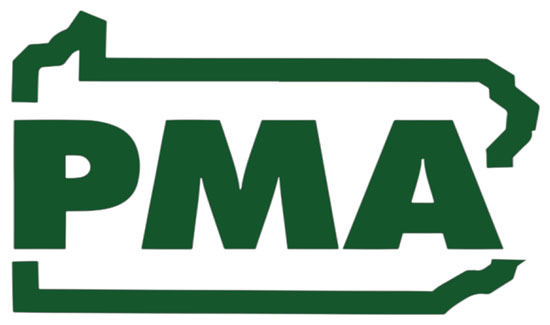PA Supreme Court Holds Off Reviewing Limits on Lawsuit Abuse — For Now

Pennsylvania health care providers and the public — as patients and future patients – received a reprieve when the Supreme Court agreed to delay reverting to a pre-2003 administrative rule allowing venue-shopping. Under current law, a medical malpractice lawsuit must be filed in the county where the harm is alleged to have occurred. If this commonsense reform is eliminated, it may trigger skyrocketing health care costs and an exodus of doctors fleeing crushing liability insurance costs, restarting the crisis Pennsylvania was in at the turn of the century.
PMA President & CEO David N. Taylor welcomed the news from Supreme Court Chief Justice Thomas Saylor, noting that the delay would now allow Pennsylvania’s Legislative Budget and Finance Committee to complete an analysis of the proposed rule change, as directed by Senate Resolution 20.
“Pennsylvania’s litigation industry is seeking to restart the medical crisis from the late ‘90s and early 2000s,” Taylor said. “This attempt to reverse a successful reform is the opening salvo in a new assault against Pennsylvania’s citizens.”
In a February 14 letter to House Republican leaders, the Chief Justice wrote that the Court’s Civil Rules Procedural Committee would pause its consideration of the rule change that would effectively allow trial lawyers to choose venues where courts are traditionally biased against defendants in cases of alleged harm by a doctor, hospital, or other healthcare provider. The widespread practice has earned the dishonorable designation “venue-shopping.”
Originally, public comments were due to the Rules Committee by February 22, but now the Court will await the results of a study by the General Assembly’s bipartisan Legislative Budget and Finance Committee (LB&FC) to analyze the impact of the change originally recommended by the Interbranch Commission under the 2002 MCARE ACT. The study has been ordered by Senator Lisa Baker’s (R-Luzerne) Senate Resolution 20, which the Senate approved on February 5 with a 32-17 vote. LB&FC has one year to report on its findings.
Curt Schroder, the Executive Director of the PA Coalition for Civil Justice Reform, stated that the 2003 rule change has worked exactly as intended. He noted that the Supreme Court’s statistics on case filings show that the average number of medical malpractice filings in Philadelphia per year in the 2000-2002 pre-rule change era was 1,204. In 2017, 406 cases were filed in Philadelphia, a 66.3% drop. Schroder said that if the Court reverts to the old rule, the venue shopping would be even more egregious than before due to consolidations in the health care industry.
“It wouldn’t take much to move a case from Dauphin County, where the alleged injury occurred to more trial lawyer friendly venues in Philadelphia or Allegheny counties,” Schroder said. “A provider could just have a billing office, or some other location, in those counties. The connection can be very loose.”
Before the rule change, the Philadelphia court system was the go-to venue for the trial lawyers filing medical malpractice cases. The court is so trial lawyer happy, in fact, that in the most recent ranking of “Judicial Hellholes” by the American Tort Reform Association (ATRA) the Philadelphia Court of Common Pleas ranked sixth worst in the nation, beating out the New Jersey Legislature and court systems of entire states.
Victor Schwartz, co-chair of Shook, Hardy & Bacon’s Public Policy Practice Group, and leading expert on procedure and litigation reform, said that venue change such as the one enacted in Pennsylvania in 2003 is one of the most important reforms any jurisdiction can take improve its legal climate without limiting an injured party’s rights.
“Venue shopping is nothing more than litigation tourism,” Schwartz said. “Someone goes to another county or state, not to shop and visit museums, but to get more than an even hand in their courts. There is no other reason to go.”
“Anyone but for a few lawyers would say that limiting venue is fair,” he added.
The proposed venue change had its beginnings in November 2015 when the Philadelphia Trial Lawyers Association pumped $2.1 million into the Supreme Court races of Democrats Kevin Dougherty, Christine Donohue, and David Wecht, all of whom won.
Since then, businesses have been carefully watching the Pennsylvania Supreme Court, ATRA said in its Judicial Hellhole report released in December 2018.
During the past year the court has “rendered decisions affecting asbestos litigation, medical liability, and workers’ compensation claims,” ATRA said. “It also issued a highly anticipated ruling on requirements for ‘bad faith’ lawsuits against insurers, which may not invite a huge new wave of litigation but failed to limit such claims to those involving actual misconduct.”
If the court does revert to the original venue rule, Schroder said there is some sentiment in the Legislature for approving a constitutional amendment that would require the venue remain in the county where an injury allegedly occurred, not just for medical malpractice cases, but for all civil cases.
“Some explanatory language in the proposed rule change talks about how having the rule apply just to malpractice cases is unbalanced,” Schroder said. “Then balance it by making it the same rule for all cases.”






